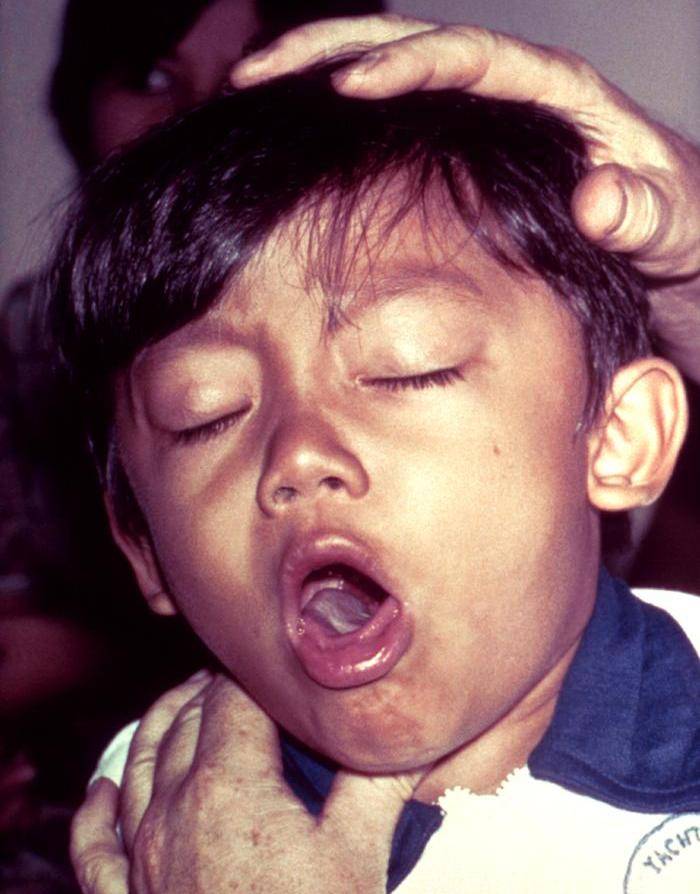Our clinic is one of the leading destinations for children’s health in Roswell and Alpharetta. Today’s post is about a common condition called scabies.
What Is Scabies? Scabies is a form of skin infestation caused by a mite. It is scary when we describe it like that but that is what it is. These mites are barely visible to the naked eye, with the female measuring about half a millimeter or less in length. The insect is called Sarcoptes scabies.
Do not try to memorize this name because it is indeed a mouthful. I remember it all the time because this was one of the questions my professor asked me in 1992 during my pediatrics oral examination. The result of this condition is an excessively itchy skin rash that may even get infected by bacteria and may bleed from intense scratching by the affected child.

How Common Is Scabies?
Many pediatricians in Georgia and pediatricians in Alpharetta area have made a diagnosis of scabies before. It is common globally and tends to be more prevalent in crowded conditions. For children, and in the temperate countries like the United States, it is more common in the colder winter months. This may be related to the higher probability of survival of these mites on beddings in cooler climes. Scabies is found all over the world, affecting up to 100 million people globally.
How does one get scabies?
The female mite burrows under the skin and deposits its eggs. These eggs mature after about 2 weeks. During this period and for up to 1-2 weeks after, the affected person has no symptoms.
Thus one may even be transmitting the disease and not know one has contracted it until much later. It is common for mothers to transmit the disease to their infants and also by direct contact from person to person. Young adults tend to contract scabies from sexual activity.
One would expect transmission also in schools but the level of contact in schools is not close enough to facilitate transmission. There have been documented transmission by wearing contaminated gloves or handling heavily contaminated clothing. It may also be transmitted by lying on a contaminated bed. A different species infects cats and dogs and usually would not cause severe illness in humans.
What happens when one gets scabies?
Initially, the female which has fertilized eggs burrows under the skin slowly and lays 2 to 3 eggs at a time. It may lay a total of up to 25 eggs and then it dies in place after 1-2 months. The development of the insect from the egg stage all the way to the larva and then full insect progresses quickly. Within 4 days of hatching, the larvae are mature, migrate to the skin surface, make and repeat the cycle.

What are the typical clinical features of scabies?
Scabies is very itchy. Extremely itchy. That is the one thing anyone who has had scabies will tell you. Severe paroxysmal itching is the chief symptom. The itching is out of proportion to the visible lesion or excoriation. With time the excoriations can get really bad.
The areas that are often affected are the armpits, flexor parts of the wrists, elbows, skin adjacent to the nipples (especially in women), around the belly button, groin, penis and scrotum, thighs, lower buttocks, instep of the foot and the web spaces between the fingers and toes.
There are red raised papules in these locations. In younger babies and infants, the distribution is more widespread and the redness and scaling are more pronounced. In older children and adults, the face and scalp are rarely, if ever affected. The clinical features are generally due to the body reacting to the mite, its feces, and its secretions. It is a type 4 hypersensitivity reaction. What are the ATYPICAL clinical features of scabies?
What are the ATYPICAL clinical features of scabies?
Is some cases, the affected child could develop generalized urticaria (generalized welts all over the body that are itchy). Also, there is a form of scabies called Norwegian scabies.
This is a form of crusted scabies mainly seen in people with poor immunity (due to chemotherapy for cancer treatment, or AIDS) where the person has sometimes as much as 2 million mites alive on their skin at the same time (usually the number should be less than 100). There could also be secondary infection with staphylococcus or streptococcus bacteria.
How will my provider diagnose scabies?
For most experienced providers, the clinical distribution and the history are all they need to make the diagnosis. The skin burrows are not easily visualized and neither are the mites or their eggs. However, sometimes because the history is not straightforward or because of the presence of complications or to convince the family of the validity of this clinical diagnosis, the provider may order a skin scraping test where the mites, larvae, eggs or feces are seen in the scrapings. If the lesions are nodular, a skin biopsy may be warranted. Other tests include using adhesive tape and then viewing it under a microscope or using dermoscopy (specialized dermatologist equipment).
How is scabies treated?
The goal is to eliminate all mites and all its eggs. Unfortunately, because the eggs are not affected by permethrin which is the chemical substance that is most often used, the treatment has to be repeated after 1 week to eliminate any newly hatched adult mites. Permethrin is applied to the entire body for 12 hours. All household members and close contacts have to be simultaneously treated irrespective of whether they have symptoms or not.
All bed linens, towels, and clothes worn within the preceding 2 days also need to be machine-washed with hot water and machine dried with high heat. For materials that are not washable, the recommendation is to place them in a sealed plastic bag for 7 days. Why would I need antibiotics after being diagnosed with scabies?
Why would I need antibiotics after being diagnosed with scabies?
On rare occasions, scabies lesions could get secondarily infected. That would lead to a need for antibiotics. The antibiotics are usually the same ones we use for common strep and staph infections.
What is your past experience with scabies?
At Omega Pediatrics we ensure that parents have access at all times so that they can reach us for decisions about their child’s health. Read other blog posts here.
Comment below or on our Facebook Page. Please share this article.
Omega Pediatrics Difference: At Omega Pediatrics in Roswell, Georgia we understand the challenges that parents face when their children develop symptoms late in the day or after hours. Many pediatric offices are closed after 4 pm however we are open every weekday up to 9 pm for walk-ins and we have telemedicine via evisits for our known patients. Our clinic is one of the easily accessible pediatric primary care clinics in Roswell and Alpharetta. We provide pediatric primary care to families in the North Fulton area and we have families that live in Sandy Springs, Johns Creek, Duluth and Cumming.
Immunizations after-hours: One advantage of switching to Omega Pediatrics for your child’s primary care is that you can bring your child in for immunization after regular business hours. We provide this service because we have the passion for what we do and we want to be a comfortable and convenient service, not the ordinary pediatric doctor’s office.



